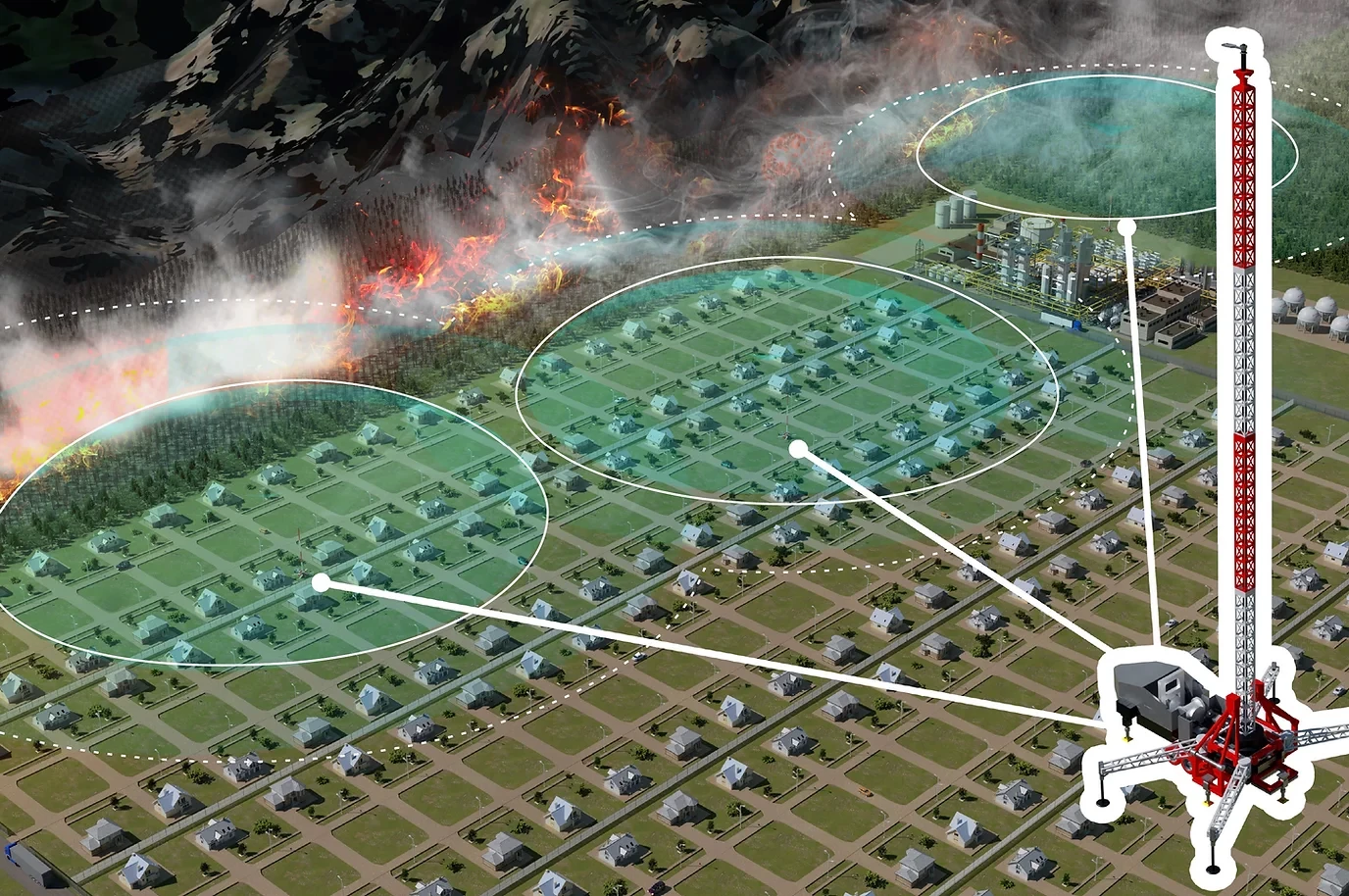When a raging forest fire is approaching a community, a good rainfall greatly reduces the chances of the flames actually reaching the buildings. But if rain isn't in the forecast … well, that's where the RainStream tower is designed to come in.
Manufactured by Canadian company Wildfire Innovations Inc, the device takes the form of a telescoping steel tower that lies on its side (and shortened down) on an integrated trailer when not in use. It can be towed to the point of deployment – such as the outskirts of a town near a forest fire – by a 1-ton pickup truck.
Upon reaching that destination, the trailer's four stabilizing legs are extended, the tower pivots on the trailer to stand vertically, then it extends to its full height of 100 ft (30.5 m). Its ground crew proceed to run a hose from its diesel-powered pump to a fire hydrant, lake, river or other source of water.

Once the pump is started up, the RainStream starts spraying water out of its rotary-lawn-sprinkler-like "rain head" at the top of the tower. That head can be set to rotate 360 degrees as it sprays, or to spray in just one direction.
In either case, the water forms a fire-thwarting mist that drifts down to wet and cool the trees and buildings over an area of 8 to 20 acres (3.25 to 8 hectares) depending on the prevailing winds.

Set-up reportedly takes a little under 40 minutes with a two-person crew, or half that with four people. One tankful of diesel should be good for up to 40 hours of runtime.
And needless to say, more than one tower can be deployed per fire.
"The normal operating procedure is to position a RainStream fleet upwind of communities or critical infrastructure to create a 'Wall of Water' and provide a protective mist," Wildfire Innovations CEO Rolf Wenzel tells us. "However it can be placed in any location at any time to support firefighting efforts."
Wenzel adds that the company is starting production of the towers this year, for delivery to clients next spring (Northern Hemisphere).

A permanent version of the RainStream tower is also in the works. It can be installed at locations such as wilderness lodges, oil refineries or ecologically sensitive areas, and remotely activated if necessary.
You can see the mobile model in action, in the video below.
Source: Wildfire Innovations Inc.






